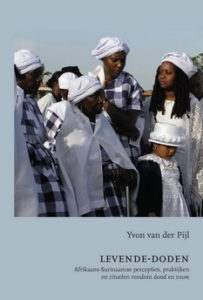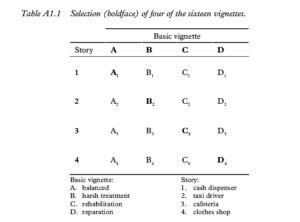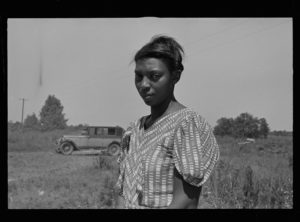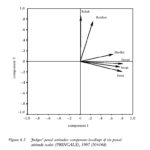Punishment And Purpose ~ Appendix 1~ 4
Appendix 1. Vignettes
The boldface vignettes in Table A1.1 are included in this appendix
Table A1.1
A1. Robbery at a cash dispenser: balanced
Late in the evening, a man is taking money from a cash dispenser in the hall of a bank when he is suddenly grabbed and punched in the face. He sees before him a man with a black nylon stocking on his head and a gun in his hand. The offender tells the victim to take NLG 1,000 from the cash dispenser for him, otherwise he will shoot. The victim panics, and starts to shout and hit out wildly. This causes the offender, Johannes Cornelis Vrugink, such consternation that he takes from the machine the NLG 150 that the victim had already requested and runs away. In all the commotion he forgets to remove the nylon stocking from his head.
One street away, two police officers on their beat stop Vrugink, who is still wearing the stocking on his head. When Vrugink tries to run away, the officers grab hold of him and then search him. In his pocket the officers find a toy gun, which has been painted black, and NLG 150. Vrugink is taken back to the station and questioned. At first Vrugink denies any wrongdoing. Soon after the arrest, however, the victim arrives to report the offence. When Vrugink is confronted with the information provided by the victim, he finally admits to the offence. The toy gun, the nylon stocking and the NLG 150 are seized. Vrugink is kept in custody for another three days and then released.
The victim is a 40-year-old man. He is married with two children. Immediately after the offence he went to the hospital’s casualty ward. His nose was found to be broken and he received treatment. His glasses, worth NLG 600, were destroyed by the punch. The victim says that being threatened by the (toy) gun has traumatised him. He was on sick leave for two months after the offence. Now he is still fearful, particularly out of doors. He has trouble sleeping and finds it very difficult to concentrate at work. The victim is not party to the action, but is present at the trial.
Nineteen-year-old Johannes Cornelis Vrugink is unmarried and at the time of the trial has been living with his girlfriend, also 19 years old, for several months. Vrugink previously lived from the age of 16 with his uncle, after running away from home because of continuing problems with his stepfather. After primary school, Vrugink attended but did not complete the LTS (junior technical school). He has had a number of jobs through an employment agency but kept leaving them because he found the work too dull, had difficulty getting up on time in the morning, and usually argued with his employers. Vrugink has trouble dealing with conflict situations. He says that out of boredom he ‘smokes a lot of dope’ and gambles regularly. These activities cost a great deal of money. There are no further indications of addiction to hard drugs. Vrugink committed the offence because of a chronic lack of funds and in order to have money to impress his friends. Vrugink was unemployed at the time of the offence. He receives income support and is following a professional driving course. He is in the process of setting up his own transport business, with the help of his employment agency.
Vrugink is present at the trial. When allowed a final word, he says that he wants to dedicate himself fully to making a success of his business and keeping on the straight and narrow so that he can lead a normal life with his girlfriend. He tells the victim that he deeply regrets his acts and wants to change his lifestyle.
The judicial documentation shows that when Vrugink was 18 years old he received a magistrate’s fine of NLG 200 for assault. At 17 years old, Vrugink spent two months in a youth custody centre for robbery. He has also been involved with the law in connection with vandalism and shoplifting. No sentences were passed in these cases. Read more
Alison Flood ~ The 20 Most Influential Academic Books Of All Time: No Spoilers
 The Guardian ~ Open Culture. Sometimes I’ll meet someone who mentions having written a book, and who then adds, “… well, an academic book, anyway,” as if that didn’t really count. True, academic books don’t tend to debut at the heights of the bestseller lists amid all the eating, praying, and loving, but sometimes lightning strikes; sometimes the subject of the author’s research happens to align with what the public believes they need to know. Other times, academic books succeed at a slower burn, and it takes readers generations to come around to the insights contained in them — a less favorable royalty situation for the long-dead writer, but at least they can take some satisfaction in the possibility.
The Guardian ~ Open Culture. Sometimes I’ll meet someone who mentions having written a book, and who then adds, “… well, an academic book, anyway,” as if that didn’t really count. True, academic books don’t tend to debut at the heights of the bestseller lists amid all the eating, praying, and loving, but sometimes lightning strikes; sometimes the subject of the author’s research happens to align with what the public believes they need to know. Other times, academic books succeed at a slower burn, and it takes readers generations to come around to the insights contained in them — a less favorable royalty situation for the long-dead writer, but at least they can take some satisfaction in the possibility.
The shortlist of these most important academic books of all time runs as follows (and you can read many of them free by following the links from our meta list of Free eBooks):
Amongst others:
Stephen Hawking ~ A Brief History of Time
Immanuel Kant ~ Critique of Pure Reason
Germaine Greer ~ The Female Eunuch
Niccolò Machiavelli ~ The Prince
Adam Smith ~ The Wealth of Nations
http://www.openculture.com/the-20-most-influential-academic-books
Combatting Climate Change Requires A Transition To New Economic Values: An Interview With Graciela Chichilnisky
 Climate change represents the greatest threat facing humankind. Yet, not only is very little being done to combat the climate change threat, but there are still vocal climate change deniers around us, some of whom are even running for the presidency of the United States. Moreover, there seems to be confusion about the most effective ways to combat climate change. The latest effort by global leaders to address the problem of climate change, as reflected in the Paris Agreement of late 2015, falls short of implementing the necessary steps to save the planet.
Climate change represents the greatest threat facing humankind. Yet, not only is very little being done to combat the climate change threat, but there are still vocal climate change deniers around us, some of whom are even running for the presidency of the United States. Moreover, there seems to be confusion about the most effective ways to combat climate change. The latest effort by global leaders to address the problem of climate change, as reflected in the Paris Agreement of late 2015, falls short of implementing the necessary steps to save the planet.
But this begs the question. What are the necessary steps that need to be taken to prevent a catastrophic climate change scenario? In this exclusive interview for Rozenberg Quarterly, world renowned economist and climate change authority Graciela Chichilnisky discusses the nature of the problem of climate change, highlights what is at stake, and argues cogently what should be done to save the planet.
Professor Chichilnisky, it is widely known that climate change can be caused by both natural variations and human activity. Is the climate change being observed today due to natural variations or are its causes to be found in human activities and greenhouse gas emissions?
Scientists all over the world are in agreement that the climate variations we observe today are due to a global change in climate, and that increased greenhouse gases in the atmosphere from human activity, particularly the burning of fossil fuels since 1945, are responsible for climate change. This is not a gentle warming trend, it is the melting of the North and the South poles, and a confirmed rising level of the oceans worldwide that will engulf large areas of the planet, and include 43 island nations states.
In the United States, virtually all leading Republican figures, including Donald Trump, who has already wrapped up the Republican nomination, argue that climate change is based in pseudo-science. What’s going in here? Are Republicans so out of touch with reality, or are they simply interested in protecting vested interests in the fossil fuel economy?
The Republican party is conservative by nature and resists change, even the acknowledgment of the need for change. This is a natural human response. Denial is known to be the first psychological response to a traumatic event, and climate change is potentially catastrophic. Denial is a natural first response and can take the form of denouncing climate science as pseudo-science. However understandable the reaction may be, we cannot remain mired in the first response to a traumatic event, and need action. It is now possible to take action as there are technologies that can remove the carbon that is already in the atmosphere in an affordable way, and this is needed now to avert catastrophic climate change. But it requires moving from the stages of denial and anger to the stage of acceptance. Then we can take action and create global policy as needed.
However, there are some scientists and former astronauts who claim that NASA’s studies of climate change, for example, are based in highly complex models which have proven highly inadequate in the last. Any comments on this?
Indeed, climate models are recent scientific developments and they are complex. This is true. Nobody can predict the weather exactly for example. But the scientific evidence for the overall climate change trend is now overwhelming accepted by most scientific bodies, including the IPCC which is the UN scientific body consisting of thousands of scientists from all over the world, and nobody debates that. Read more
Yale University ~ Photogrammar – The Great Depression
Origins
After a series of setbacks in the courts that repealed many of the First New Deal’s program, President Roosevelt pursued a new set of initiatives including the Resettlement Administration in 1935. It was charged with aiding the poorest third of farmers displaced by the depression and particularly focused on resettlement on viable lands and providing low-interest loans. Directed by Rexford Tugwell, a Columbia University economist, the RA came under immediate scrutiny. Realizing the battle for public opinion had begun, Tugwell hired his former student Roy Stryker to lead the Historic Section within the Information Division of the RA, which in 1937 was moved to the FSA.
Mission
In order to build support for and justify government programs, the Historical Section set out to document America, often at her most vulnerable, and the successful administration of relief service. The Farm Security Administration—Office of War Information (FSA-OWI) produced some of the most iconic images of the Great Depression and World War II and included photographers such as Dorothea Lange, Walker Evans, and Arthur Rothstein who shaped the visual culture of the era both in its moment and in American memory. Unit photographers were sent across the country. The negatives were sent to Washington, DC. The growing collection came to be known as “The File.” With the United State’s entry into WWII, the unit moved into the Office of War Information and the collection became known as the FSA-OWI File.
170.000 Photographs documenting the Great Depression
Go to: http://photogrammar.yale.edu/
Levende-Doden ~ Afrikaans-Surinaamse percepties, praktijken en rituelen rondom dood en rouw ~ Inhoud
 ‘De dood (of de zinspeling op de dood) maakt mensen kostbaar en aandoenlijk’ – Jorge Luis Borges in ‘De onsterfelijke’ (De Aleph, 1949)
‘De dood (of de zinspeling op de dood) maakt mensen kostbaar en aandoenlijk’ – Jorge Luis Borges in ‘De onsterfelijke’ (De Aleph, 1949)
Inhoud
Proloog: Anansi en Dood
1. Inleiding: we leven lekker hier
I – Identificaties & attitudes
2. Wortels & wording
3. Kruis & kalebas
4. De ander & de observator
II – Memento mori
5. Doodstijding & bekendmaking
6. Rituele organisatie & zorg
III – Dede oso
7. Achtergrond & actualiteit
8. Actoren & symbolen
9. Uitvoering & afsluiting
Levende-Doden ~ Proloog
Dit is een verhaal over Anansi. Verhalen over Anansi zijn onuitputtelijk. Dit verhaal gaat over Anansi en Dood. Dood woonde niet in de stad bij de mensen. Waarom was hij hier? Wat bracht hem hier? Anansi! En Dood is nadien niet meer weggeweest.
Op een dag had Anansi niets te doen. Hij had geen eten en zei tegen Akoeba: “Moet je horen. Ik ga kijken of ik wat eten kan vinden. Maak alles voor me klaar.” Akoeba nam een rugzak, een boog en een paar pijlen en vishaken. Ze pakte alles in voor Anansi om mee te nemen.
Anansi vertrok. Hij ging diep ’t woud in. De hele dag liep hij, maar hij vond niets. Net toen hij op het punt stond terug te gaan, zag hij een hut een eindje verder ’t bos in. En zoals de ouderen zeggen: “Waar rook is, daar moeten mensen zijn.”
Anansi liep naar de hut. Hij zag iemand zitten in de deur van de hut. Hij zei: “Hallo, vriend.”
De man antwoordde: “Goeie dag meneer, wat doet u hier?”
Anansi antwoordde: “Ik ben Anansi en heb een hele dag naar werk gezocht maar niets gevonden.
Vanmorgen zei ik tegen mijn vrouw, pak wat dingen voor me in, dan ga ik kijken of ik wat vlees kan vinden om mee naar huis te nemen. Maar, zoals u ziet, vader, ik sterf van de honger.”
De man zei: “Kom binnen, kom binnen. Blijf niet in de deuropening staan, kom erin.”
Anansi ging de hut in. Hij ging zitten en zei weer: “Vader, ik sterf van de honger.”
Broer Dood vroeg: “Weet je niet met wie je spreekt? Weet je niet wie ik ben?”
Anansi antwoordde: “Nee, vader.”
Dood zei: “Wel, ik ben Dood.”
Daarop ze Anansi: “Zo, dus hier woont Dood.”
Dood antwoordde: “Ja,” en hij vervolgde: “Ga maar naar het kookhuis. Daar zie je gerookt vlees hangen boven de kookplaats. Neem een stuk, ga zitten en eet. Ik geef je er een beetje water bij, want iets anders heb ik niet.”
Anansi nam een groot stuk van het dijbeen. Hij at en at. Dood keek naar hem en zei: “Nou zeg, je bent wel hongerig!”
Anansi zei: “Nou en of.” Hij bleef maar dooreten tot alles op was. Dood gaf hem wat water. Anansi dronk het op.
Nadat Anansi gedronken had, keek hij de hut rond. Dood vroeg: “Waarom kijk je zo rond?”
Anansi antwoordde: “Eén ding zou ik u willen vragen, vader.”
Dood zei: “Wat wil je vragen?”
Anansi antwoordde: “Ziet u, de hele dag heb ik gelopen. Mijn vrouw en kinderen thuis hebben nog niet gegeten. Kunt u me ook een stuk voor hen meegeven?”
Dood zei: “Ja hoor, neem een stuk.”
Anansi nam zo’n groot stuk dij, dat het bijna niet in zijn rugzak paste. Maar dat hinderde hem niet.
Hij duwde en propte, tot dat ’t erin zat. Toen vertrok hij.
Fluitend en zingend liep hij de weg terug naar huis. Thuisgekomen riep hij: “Akoeba, Akoeba, ik ben eindelijk thuis. God had medelijden met mij en wees me een plaats waar ik voedsel kan vinden.”
Akoeba vroeg: “Waar is het?”
Anansi antwoordde: “Midden in het bos. Ik hoef me geen zorgen meer te maken over werk, want daar is altijd voedsel.”
Akoeba waarschuwde hem: “Anansi, wees voorzichtig hoor, als je zo ver weg gaat.”
Anansi antwoordde: “Maak je geen zorgen over mij. Daar is voedsel. Ik ga nu eten.”
Het verhaal gaat verder. Op een ochtend stond Anansi op. Hij wilde Akoeba niet vertellen waar hij naar toe ging. Hij nam een meelzak mee en gooide die over zijn schouder. Ook nam hij een houwer om zich een weg door ’t bos te kappen. Toen vertrok hij. Hij liep en liep. Toen hij niet terug kwam begon Akoeba ongerust te worden: “Waar blijft Anansi zo lang?”
Anansi kwam bij de hut waar Dood woonde. Hij keek rond. Niemand was thuis. Hij opende de deur van het kookhuis, glipte naar binnen en vulde de meelzak met vlees. Toen vertrok hij. Niemand wist wat hij gedaan had, niemand zag hem.
Dood kwam thuis. Ging de kamer in en verkleedde zich. Daarna liep hij naar ’t kookhuis.
“Hee?, het lijkt net alsof er iemand geweest is. Ik had zoveel vlees en nu is er zoveel van weg.” Hij dacht er niet langer over na.
Een volgende keer deed Anansi precies hetzelfde. Hij ging telkens weer terug. Maar op een dag bleef Dood thuis om hem op heterdaad te betrappen. Hij wist nog steeds niet wie het vlees wegnam. Hij verstopte zich in het huis. Het duurde niet lang of hij hoorde Anansi komen. Anansi keek rond. Alles leek normaal.
De deur was niet afgesloten. Hij gluurde in de kamer, maar zag niemand. Hij ging het kookhuis binnen naar de kookplaats. Vulde zijn zak met vlees en gooide hem over z’n schouder.
Toen hij de hut wilde verlaten, pakte Dood hem vast. Hij zei: “Zo, dus jij bent het die dit spelletje met me speelt. Jij bent het die al die dingen van me gestolen hebt.”
Anansi zei niets. Plotseling sprong hij het raam uit. Hij rende en rende met de Dood vlak achter hem aan. Ze renden het hele eind door ’t bos. Toen ze in de Putcher-buurt kwamen (de wijk waar Mevrouw Putcher woonde) keek Anansi om. Hij zag Dood vlak achter zich. Hij schreeuwde tegen iedereen daar in Poelepantje: “Doe de deuren en ramen dicht. Dood komt eraan. Doe de ramen en deuren dicht. Dood komt eraan!”
Zo volgde Dood Anansi tot in de stad en hij is sindsdien niet meer weggegaan. Daarom gaat iedereen nu dood. Read more




